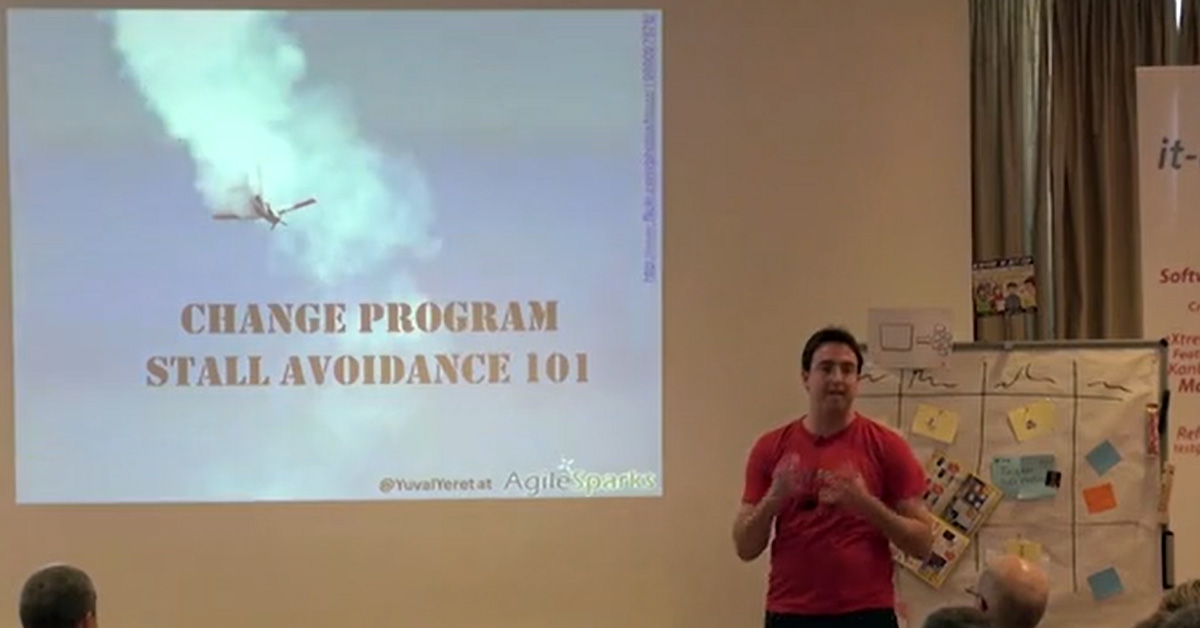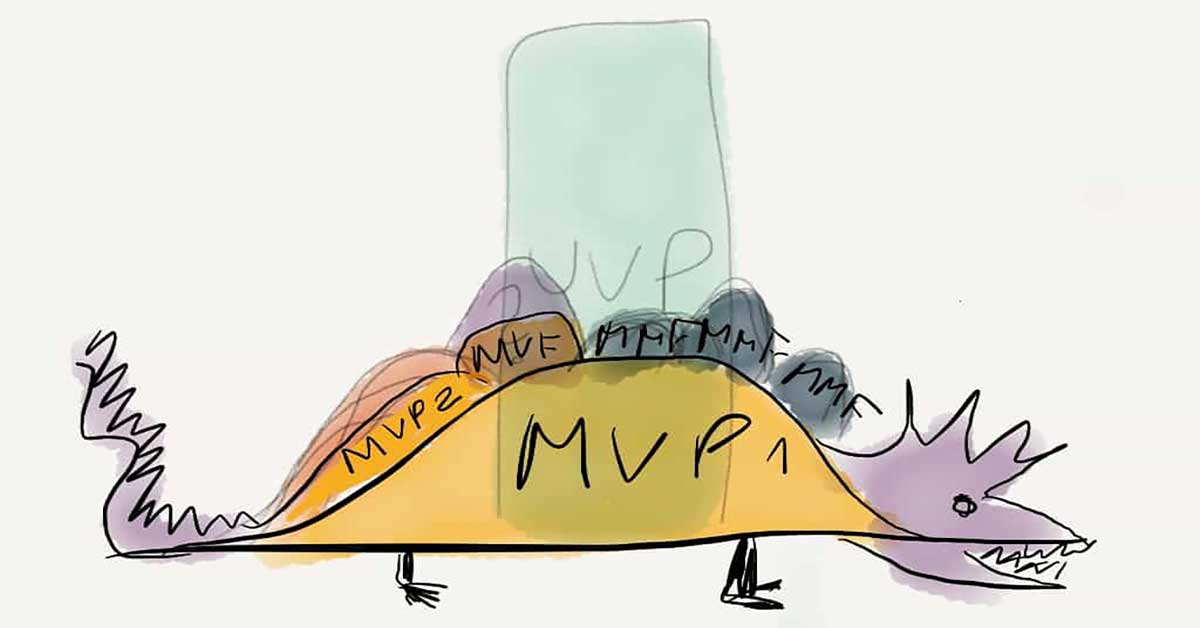
Change Program Stall Avoidance
Lean Kanban Central Europe Pecha Kucha) This Video was recorded at the conference Lean Kanban Central Europe, which took place in Munich (Germany), Oct 17-18
Home » Lean Startup

Lean Kanban Central Europe Pecha Kucha) This Video was recorded at the conference Lean Kanban Central Europe, which took place in Munich (Germany), Oct 17-18

What does Scrum Product Ownership have to do with Dinosaurs?
We typically say that Scrum Masters get to herd cats. But Scrum Product Owners actually need to learn how to ride a Dinosaur! With the click-bate established, what does that even mean?

We’ve all heard it before – “Talented technology team builds amazing product!” That… doesn’t create the impact that they wanted, not enough customers end up buying or the users aren’t happy with it or
This is an especially common problem with companies that have a “brilliant” idea or technology that someone goes developing in their garage (if startup) / innovation product development group (if enterprise). This could be a new product or just a new feature of an existing product. Typically, the Product Owner or Product Manager in the organization specifies what to build. If they’re somewhat Agile, they even work closely with the organization to build it incrementally and hopefully deliver it continuously. But still, even then, too often the product or features don’t provide the expected impact/benefits. Overcoming this challenge is a common theme that is discussed by attendees at our SAFe POPM Course.

Comment: We’re reposting here a classic article from the archives of Yuval’s personal blog.
What do Agile backlog items have to do with Dinosaurs?
I’ve been using a visualization that people find useful for understanding the relationship between the various Lean/Agile requirement containers. Some people call the full model a dinosaur. Others are reminded of the snake who ate an elephant from “The Little Prince”. (I’m sure there is a good connection to elephant carpaccio somewhere in here …)

This ISN’T Agile Marketing
First, a couple of clarifications and myth-busting. Agile Marketing isn’t reactive marketing. Agile Marketing isn’t about how you react in a Marketing/PR crisis (ask United about those) or real-time opportunity (you can ask Oreo about those). I don’t mean that you can not/shouldn’t deal with those when you’re doing Agile Marketing, but it isn’t what Agile Marketing is about.
Agile Marketing also isn’t “We just get things done without any real process.” Being super-responsive and saying “yes we can” all the time isn’t Agile Marketing. (Especially if it means unsustainable pace).
Finally, Agile Marketing also isn’t Scrum, Daily Scrums/Standups, Sprints, Scrum Masters, Kanban Boards. It

“Validated Learning Over Opinions and Conventions” is the first value in the Agile Marketing Manifesto. A couple of weeks ago I was helping form what we call a “Marketing Agile Release Train” – a group of Agile Marketing teams each focused on supporting the business activities of a key product/solution in a large portfolio. The way we do this is typically a combination of some Agile Marketing training followed up by actual high-level planning of their first quarter followed by a deep dive into their first iterations/sprints.

How can you develop products in domains of extreme uncertainty?
How can you learn who will be the customers? What do the customers value? What will be a scalable and repeatable business model?
Learn about the new approach to discovering these critical aspects of a business using the latest techniques from the Lean Startup world (NOT just for Startups!!!). Based on the Lean Startup movement started by Eric Ries’ “Lean Startup” book.
Request for additional information and prices